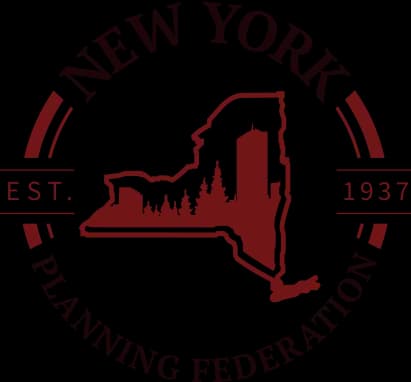To Fight ICE, Portland’s Leaders Turn to What They Know Best: Zoning
The article “To Fight ICE, Portland’s Leaders Turn to What They Know Best: Zoning” by Anna Griffin examines how Portland, Oregon, a city renowned for its progressive land-use planning, has turned to zoning laws as a strategic tool to challenge federal immigration enforcement. Written amid ongoing tensions between Portland’s liberal leadership and the Trump administration’s immigration policies, the piece highlights how local governance and urban planning can become instruments of political resistance and moral positioning.
Portland’s political and cultural identity is deeply tied to its distinctive land-use regulations, which emphasize sustainable urban design, dense neighborhoods, and protected open spaces. While these laws have been praised for promoting walkability and preserving farmland, critics argue that they restrict housing supply and inflate prices. Against this backdrop, the city’s leaders, under mounting pressure from residents opposed to federal immigration practices, have sought to weaponize these same zoning codes to constrain the operations of Immigration and Customs Enforcement (ICE) within city limits.
The focal point of the dispute is ICE’s subfield office in Portland’s South Waterfront district, a redeveloped urban area once characterized by industrial decline but now home to Oregon Health & Science University, high-rise apartments, and innovative public transit. The federal agency moved there 14 years ago, leasing private property in an area not typically zoned for detention-related activities. This location, unlike ICE facilities in suburban or isolated industrial zones elsewhere, has kept it under continuous public and regulatory scrutiny.
Tensions escalated when city officials issued a land-use violation notice to the facility’s property owner, developer Stuart Lindquist, citing 25 documented cases in which ICE allegedly violated a covenant restricting detentions to under twelve hours. This condition, negotiated in 2011 as part of a compromise allowing ICE to expand its local operations, had been meant to balance economic development with neighborhood safety. Observers tracking facility operations presented data indicating multiple breaches, turning what might have been a technical zoning issue into a political flashpoint. Immigrant rights advocates hailed the city’s approach as “data-driven” rather than purely ideological, reframing immigration enforcement as a matter of local law compliance rather than partisan confrontation.
The potential penalties are significant: if violations continue, the landlord could face escalating fines, beginning around $1,000 per month, while federal rent payments for the site exceed $2.4 million annually. More importantly, Portland’s planning authorities are preparing to reconsider ICE’s conditional-use permit, a process that could determine whether the agency can legally remain in its current location. The City Council, whose members have vocally opposed federal interference in Portland’s local governance, will eventually deliberate on the matter, though they must refrain from overt statements to avoid prejudicing the outcome.
Public sentiment has been less restrained. Local activists, like Holly Brown of the Portland Immigrant Rights Coalition, rallied with chants of “Revoke the permit,” urging city hall to take definitive action against ICE. Their demand symbolized a broader trend of cities leveraging municipal mechanisms such as zoning and permitting, to assert moral and administrative autonomy from federal mandates. Portland’s move echoes similar actions in other municipalities, such as Broadview, Illinois, where local leaders successfully forced ICE to dismantle an unauthorized fence. Yet, Portland’s situation is distinct because its ICE facility occupies privately owned property subject to city regulations, unlike most federally owned or leased detention centers that lie beyond municipal reach.
Mayor Keith Wilson and other city officials have sought to navigate a delicate balance. When Homeland Security Secretary Kristi Noem demanded that Portland police restrict protest access around the ICE building, Wilson refused, citing both logistical impracticalities and the city’s values of openness and civil demonstration. Though federal advisers proposed the city purchase the property or assume the lease to remove ICE, Wilson rejected the idea, insisting instead that the agency comply with existing land-use laws.
Still, the limits of local authority remain indefinite. Even if Portland revokes ICE’s permit, detainees might simply be transferred to the large Northwest Detention Center in Tacoma, Washington. A move critics argue would further isolate immigrants from legal aid and families. Recognizing this dilemma, City Councilor Angelita Morillo has proposed introducing an impact fee on detention centers, like the charges applied to new developments for infrastructure costs. This fee would help offset expenses tied to public safety and environmental cleanup from protests, potentially discouraging landlords from leasing to ICE.
In conclusion, Portland’s zoning battle over ICE encapsulates a novel form of municipal resistance. The one that merges urban planning, local governance, and moral politics. By reframing immigration enforcement as a land-use compliance issue, the city challenges federal power through the mechanisms of planning law. The conflict highlights both the strengths and limits of localism in confronting national policies, illustrating how the tools of urban development, zoning, permits, and fees, can become instruments in the larger struggle over identity, justice, and democratic authority.
Source: https://www.nytimes.com/2025/10/20/us/politics/portland-ice.html?searchResultPosition=1

